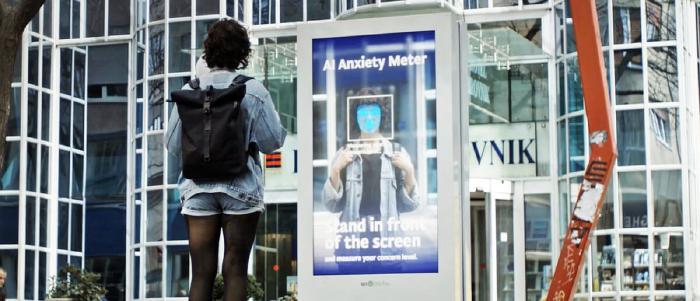
Dec 21 2023
8 min read

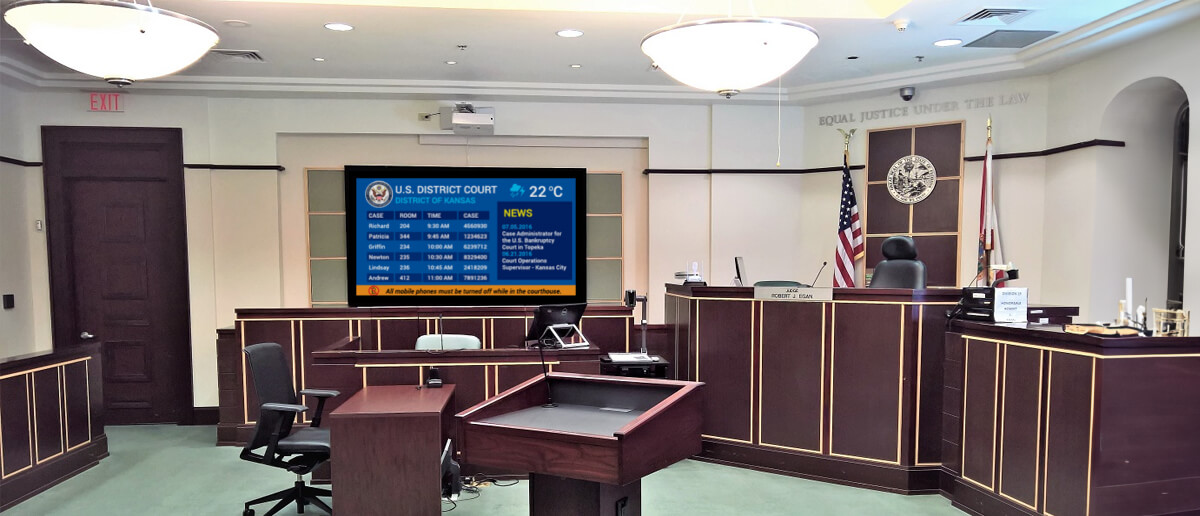
Oct
From brick-and-mortar spaces to hybrid entities, courtrooms have come a long way. Courtroom digital signage has played a pivotal role in this transformation.
Earlier this year, the Indian Supreme Court introduced futuristic, digitally upgraded courtrooms. The usual paper-filled racks lined up along the walls were replaced by top-end digital devices and video-conferencing systems.
Imagine the power of digital signage in such confines!
The digital shift is happening in courtrooms globally. Towering piles of petition documents are being replaced by smart devices with seamless connectivity. The rise of digital courthouses in the U.S. and Nordic countries has spurred other nations into introducing cutting-edge technology such as digital signage along with live streaming facilities.
In today’s blog post, we will explore how digital signage in courtrooms is transforming the judiciary. But first, let us understand what it is.
Digital signage for courtroom includes every real-time display screen mounted in the high-traffic areas of a courthouse. It is meant for quick and effective communication to staff, judges, lawyers, jury members, and visitors.
Here’s a list of what it displays:
Welcome messages
Courtroom & case schedules
Case details
Judge & jury details
Navigation & wayfinding
Emergency alerts
Courts across the globe are looking for new ways to wade through volumes of case data. Traditional methods of analyzing case hearings are becoming inadequate as emerging technology such as courthouse digital signage is grabbing the spotlight.
Let’s explore why digital signage is a growing trend in courtrooms and other legal facilities.
The chaos and clutter of courthouses is new to none. Organized information available at the fingertips helps judges, lawyers, and litigants alike.
Digital signage used for courtrooms makes this possible.
Here’s how it helps organize tons of information:
Display information by departments and locations while enforcing access controls for privileged users.
Establish a visual hierarchy for case details. E.g., Case number, name of the judge, location, etc.
For bigger courtrooms, digital screens spread across the walls help the audience seated in different areas view necessary information clearly.
Clear fonts and supporting visuals help with clarity of information.
Courtroom digital signage provides ample digital real estate to improve the experience of visitors. Many courthouses use digital socket displays that enable people to find their information in a matter of minutes.
Without skimming through piles of paperwork, they can quickly look up the details on the digital displays in courtroom corridors.
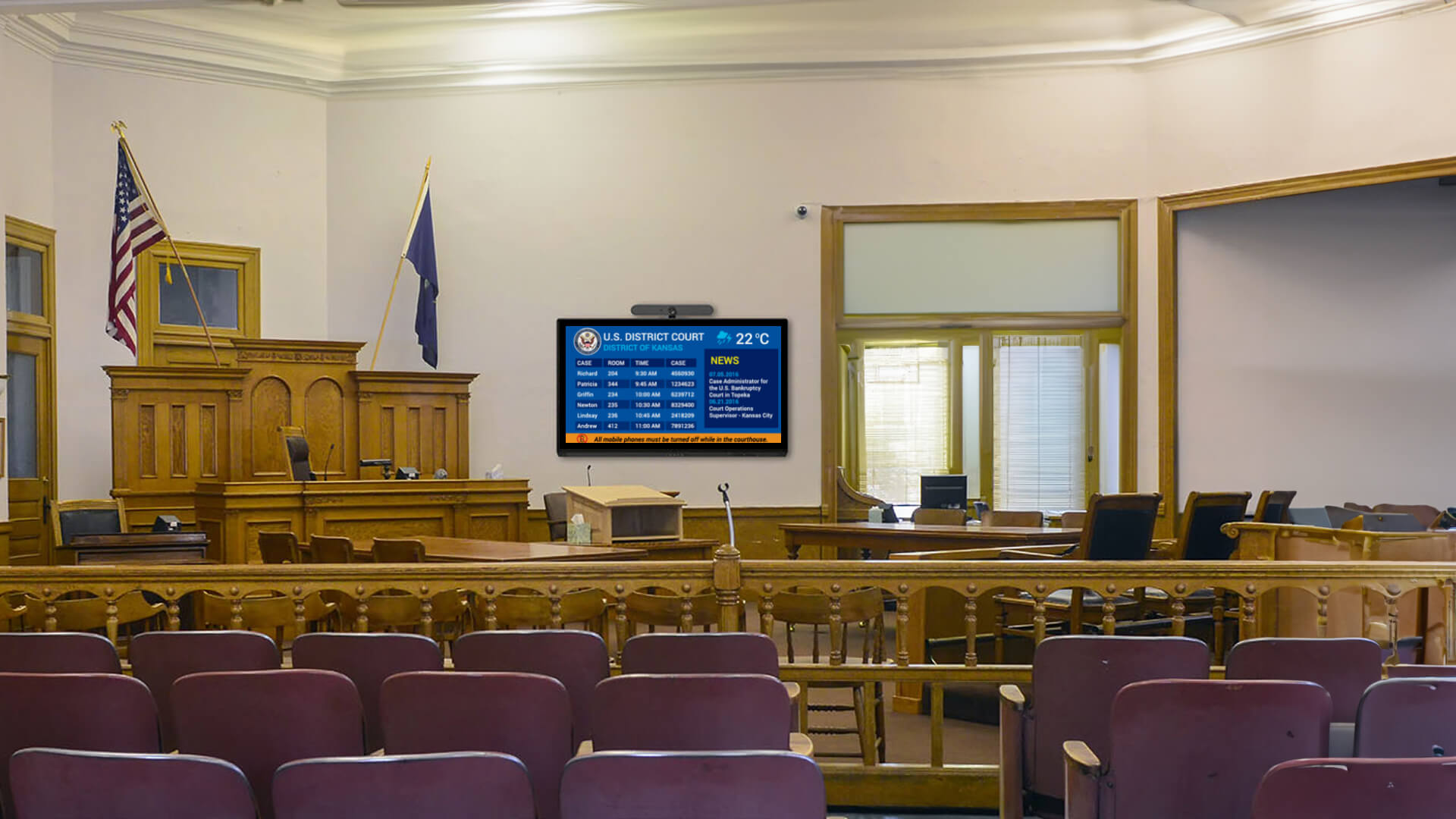
The court staff can also display additional information like room numbers, names of judges, case numbers, weather updates, and restricted zones.
The ease and speed at which digital signage in courts helps circulate information is unmatched. Given the changing dynamics in court sessions, a lot of information has to be handled by the clerks, lawyers, and jury members. And a lot of changes too.
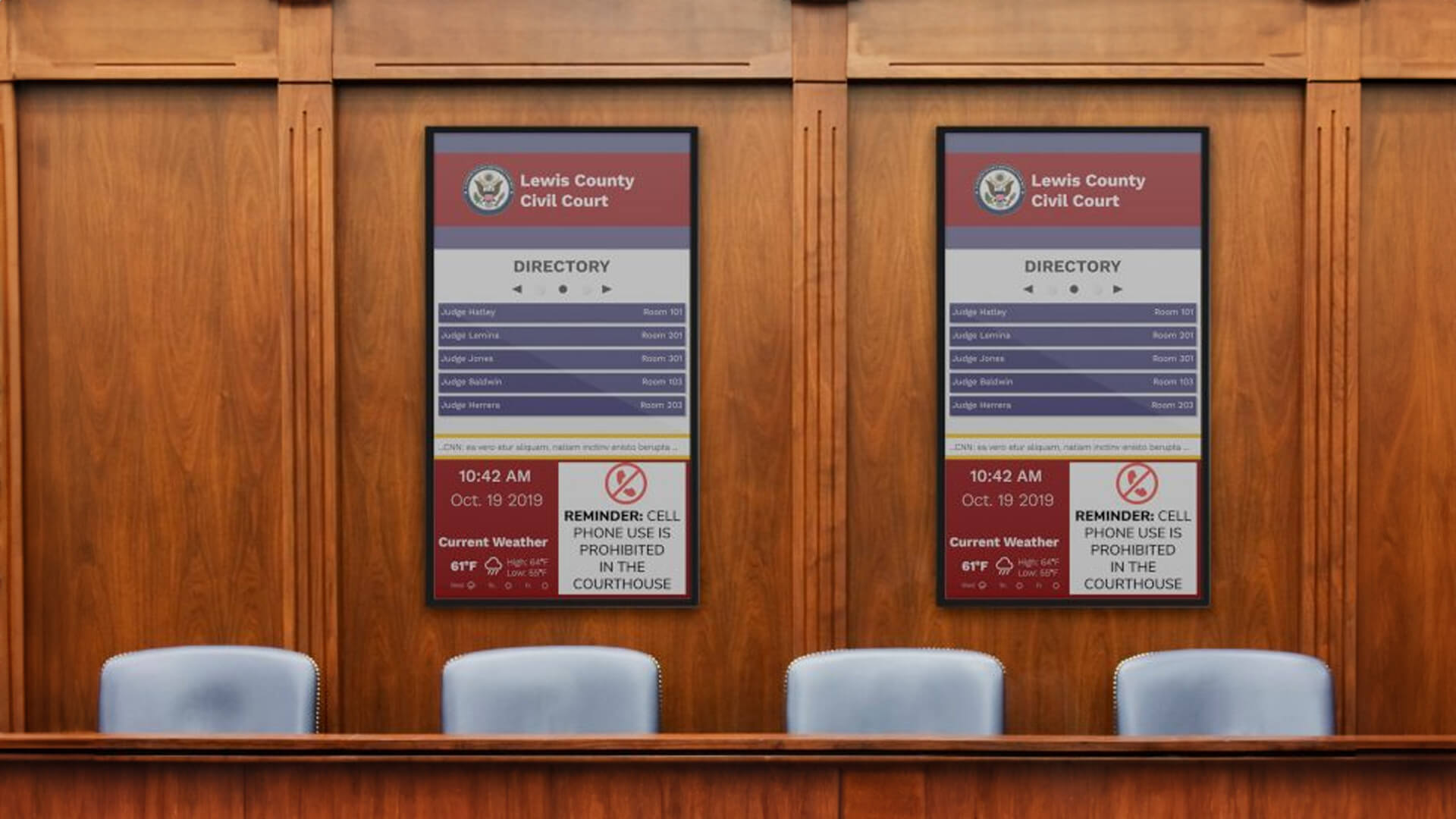
Going digital helps them communicate effectively in much less time.
Room numbers and timings for cases are always prone to change. Deploying digital signage in courtroom corridors and other high-traffic areas makes it easier for visitors to navigate and reach the designated rooms on time.
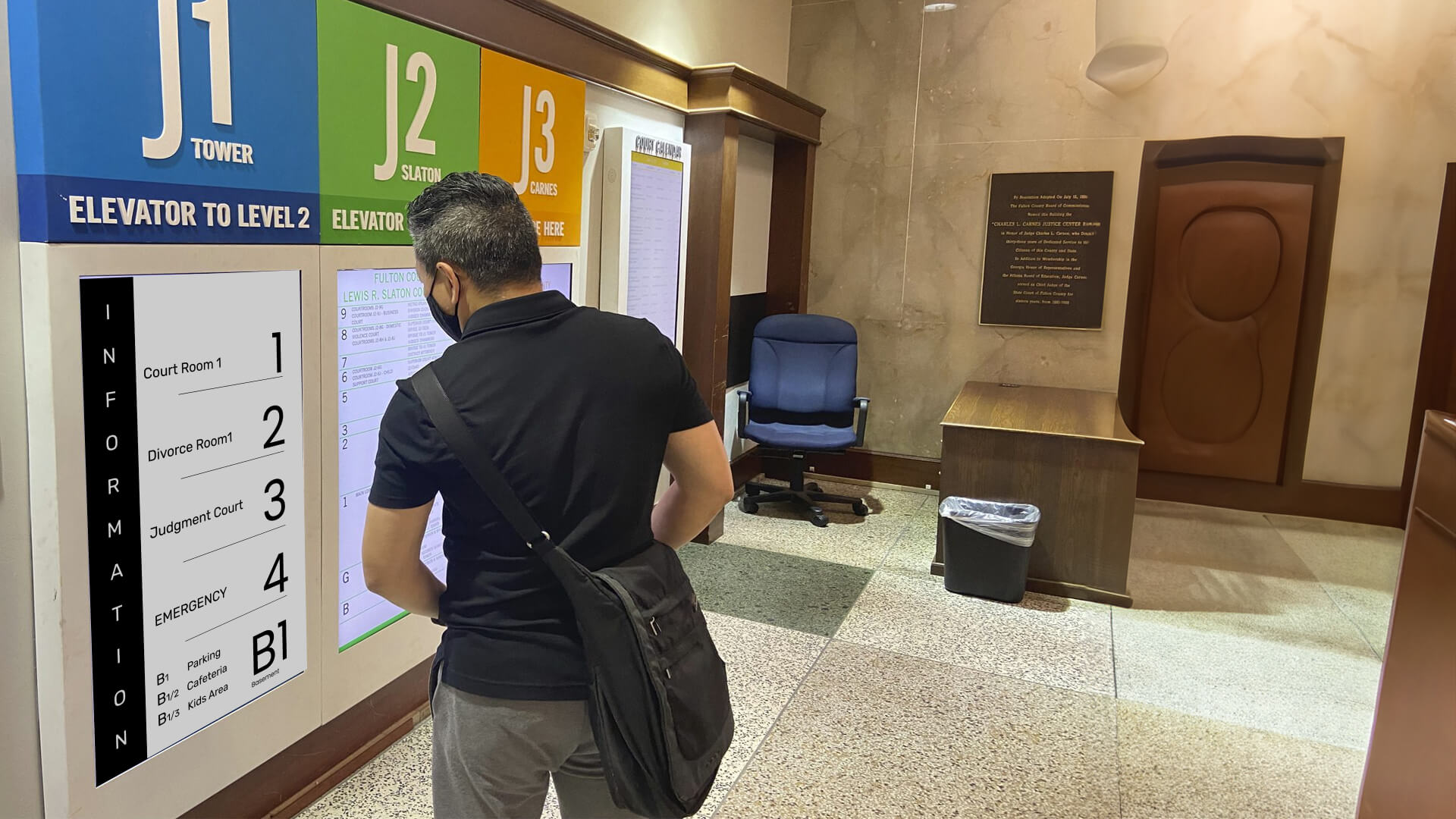
Simple directional mapping tools can turn your court digital signage into an effective wayfinder.
Use of animations and marquees can help grab attention amid the chaos. This also saves the court its valuable time and improves processes.
Placing digital signage in court lobbies, entrances, corridors, and waiting areas amps up security by displaying messages about:
Courtroom etiquette, rules, and regulations
List of restricted items
Directions to personnel for security checks
As courthouses often have prisoners brought in for trials, courtroom digital signage and other communication systems can trigger emergency alerts to summon security teams.
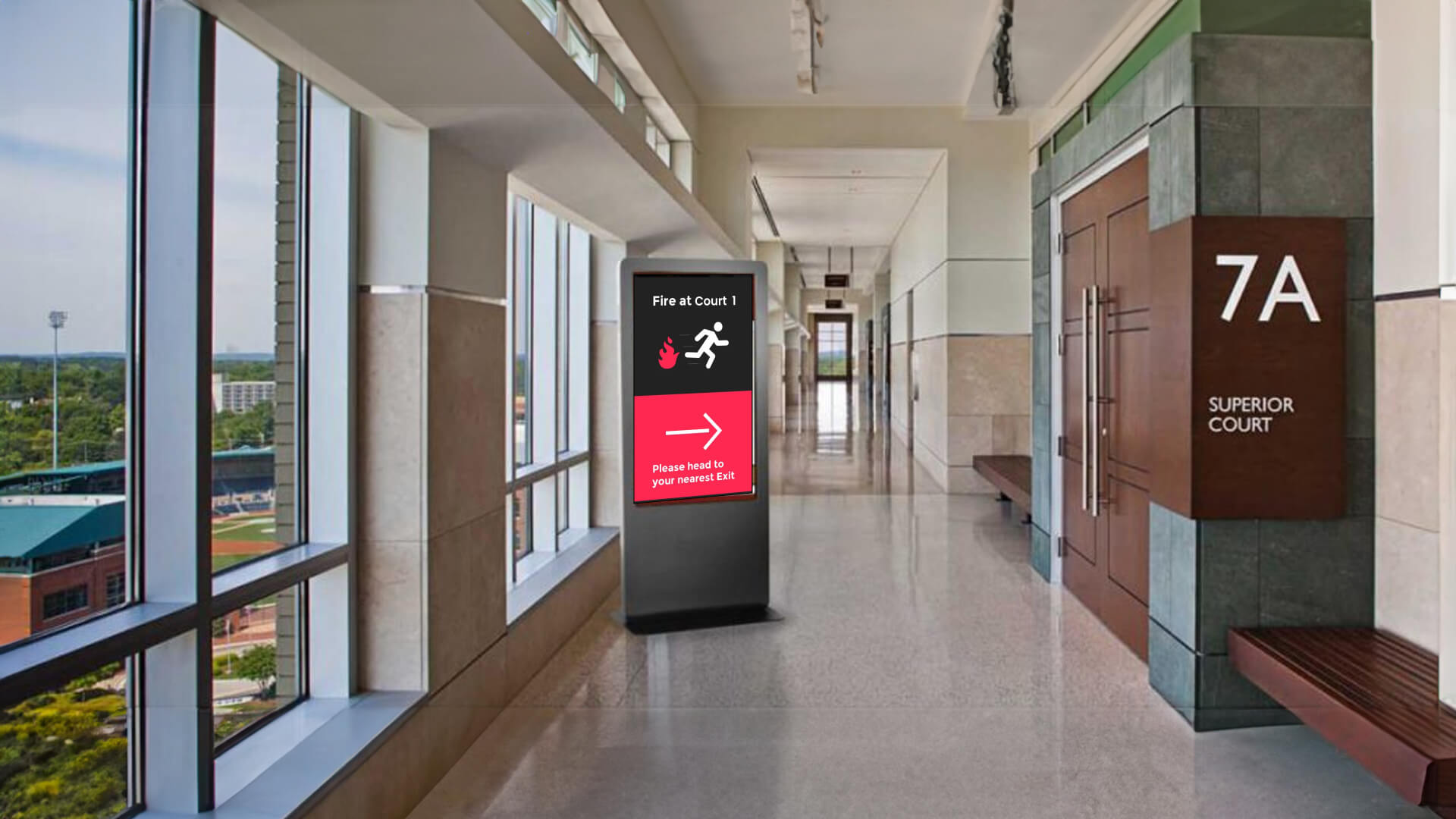
Emergency alerts for digital signage should always be kept ready for display and circulation.
During crisis hours (e.g., fire outbreak), CAP alerts from different sources can be displayed on the digital screens along with evacuation routes and instructions.
Courthouses, like any other government facility, are about catering for the community. Keeping the public informed is always a priority, and that needs an efficient workforce.
Digital signage improves employee productivity and boosts operational efficiency in the following ways:
Interactive navigation and communication of schedule changes helps visitors avoid detours and saves time.
Free from the task of delivering directions and other information, clerks can focus on high-priority tasks.
Digital signage serves as a constant reminder tool for following protocols and helps maintain law and order on the premises.
Digital signage for courtrooms is easy to control and manage, provided they have the following features:
Remote management & smart scheduling
Easy to update
Centralized control of content
Consistent Messaging
Region-specific templates for multimedia content
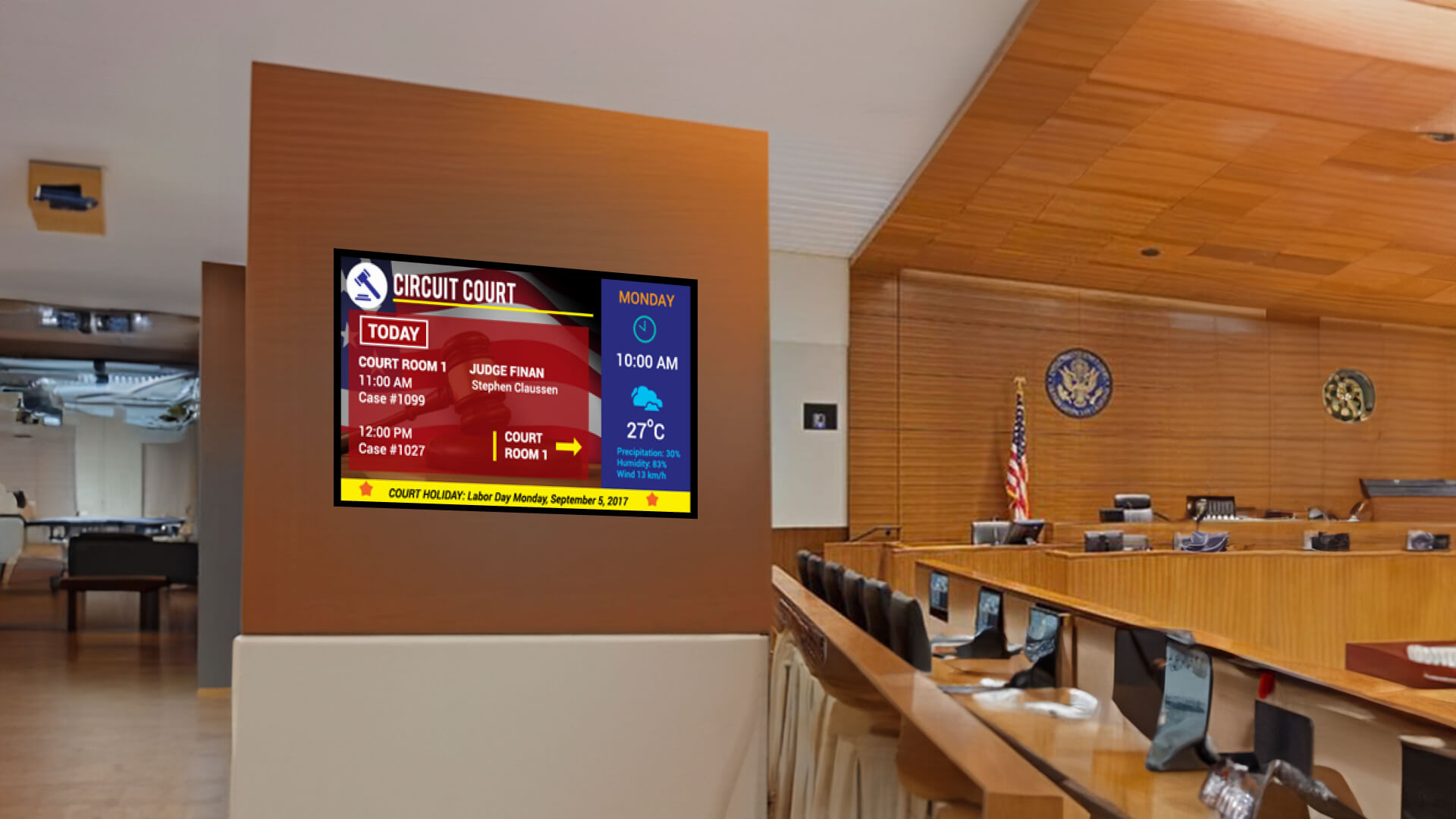
Listed below are some of the ways digital signage for courtrooms caters for different patrons and makes their journeys seamless:
Digital signage displays instructions for juror selection and keeps the jurors updated in real time. This simplifies the jury management process.
Real-time updates displayed on digital signs helps keep all the parties informed about courtroom changes, schedules, and case modifications.
Courts often have general spectators attending certain cases. Digital signage for courts keeps them aware of the rules and etiquettes to follow.
Language services
Digital signage in courts plays a pivotal role in offering services to patrons speaking different languages. The signs display multilingual information to allow the visitors to understand important details about case hearings and schedules. This eliminates language barriers.
Courthouses often witness visitors from different nationalities. In the U.K., U.S.A., and several other nations, multilingual digital signage has become a necessity. When available, multilingual signage is mostly limited to Spanish and some of the courts use four to five other languages.
To eliminate inconvenience due to limited display languages, the California Trial Courts strictly started observing the regulations under the Notice of Available Language Access Services that makes court services available in English and nine additional languages.
Based on the results obtained, some of the other courts have requested multilingual digital signage for courtrooms to be more customizable.
Another brilliant example of trials going digital is the Abu Dhabi Global Market Court. Using courtroom digital signage, the courthouse is enabling lawyers, plaintiffs, and witnesses to take part in the proceedings from any remote location.
The court has mandated the presence of just one judge for commercial and civil disputes. There is zero paperwork involved as the proceedings are completely digitized.
Numerous such hybrid courtrooms using digital signage leverage the following model developed by Microsoft for their virtual proceedings.
This model has demonstrated its merit in the fast-evolving court landscape. Courts worldwide, reeling under the pressure of growing case backlogs, are benefiting from this model to optimize their workflows.
Every new technology you introduce is ready to be tapped in by bad actors. For example, courts using digital signage connected with interpretation systems and assistive listening are prone to security issues.
Any wireless system introduced for this purpose should be encrypted to prevent cyber attackers from hacking into databases.
Pickcel is here to help you install digital signage in a safe and cost-effective way. Enter the world of paperless proceedings with our emerging technology and world-class digital signage software.
Take complete control of what you show on your digital signage & how you show it.
Start Free Trial Schedule My Demo
Dec 21 2023
8 min read
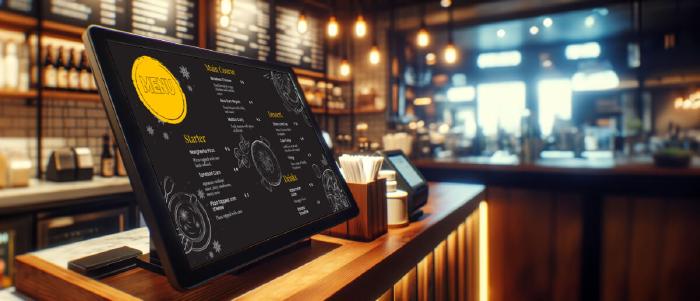
Dec 19 2023
6 min read

Dec 14 2023
7 min read
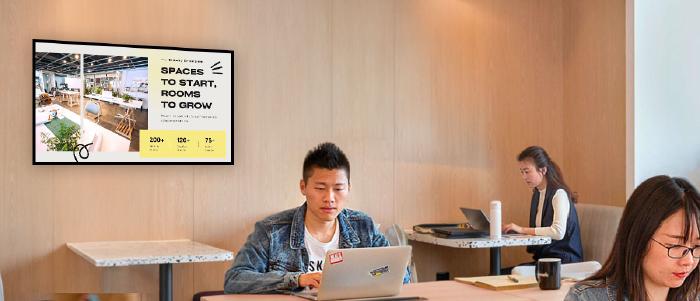
Dec 8 2023
8 min read